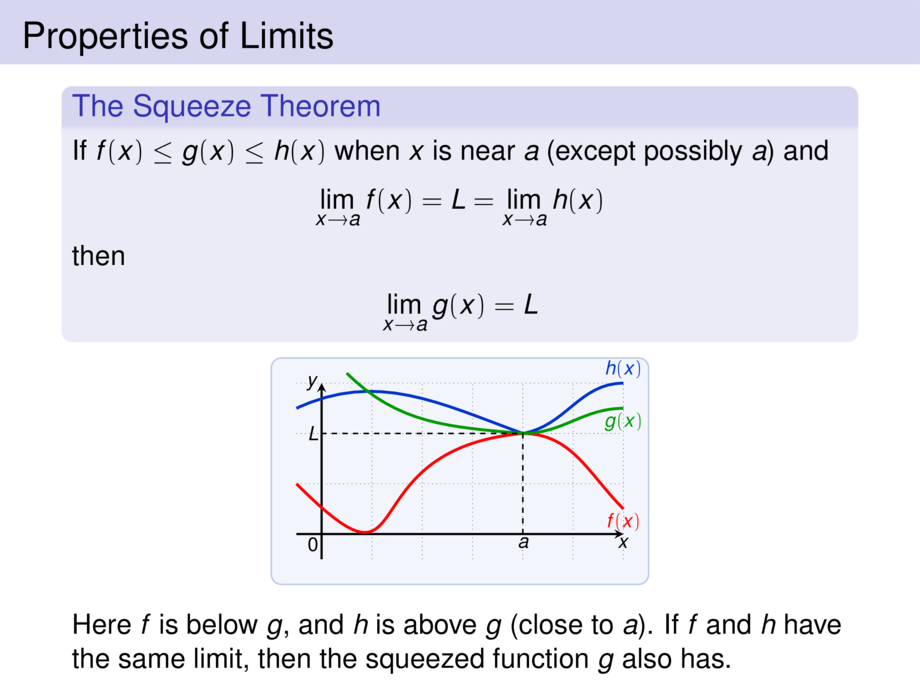



































































































131/145
\begin{frame}
\frametitle{Properties of Limits}
\begin{block}{The Squeeze Theorem}
If $f(x) \le g(x) \le h(x)$ when $x$ is near $a$ (except possibly $a$)
and
\begin{talign}
\lim_{x\to a} f(x) = L = \lim_{x\to a} h(x)
\end{talign}
then
\begin{talign}
\lim_{x\to a} g(x) = L
\end{talign}
\end{block}
\begin{center}
\scalebox{.7}{
\begin{tikzpicture}[default]
\diagram{-.5}{6}{-.5}{3}{1}
\diagramannotatez
\draw[cred,ultra thick] (-.5,1) to[out=-45,in=185,looseness=2] (4,2) to[out=0,in=135,looseness=1] node [at end,below] {$f(x)$} (6,.5);
\draw[cblue,ultra thick] (-.5,2.5) to[out=25,in=160,looseness=1] (4,2) to[out=10,in=180,looseness=1] node [at end,above] {$h(x)$} (6,3);
\draw[cgreen,ultra thick] (0.5,3.2) to[out=-45,in=175,looseness=1] (4,2) to[out=0,in=180,looseness=1] node [at end,below] {$g(x)$} (6,2.5);
\draw[dashed] (4,0) -- node[at start,below] {$a$} (4,2) -- node[at end,left] {$L$} (0,2);
\end{tikzpicture}
}
\end{center}
\pause\vspace{-2ex}
Here $f$ is below $g$, and $h$ is above $g$ (close to $a$).
If $f$ and $h$ have the same limit, then the squeezed function $g$ also has.
\vspace{10cm}
\end{frame}

